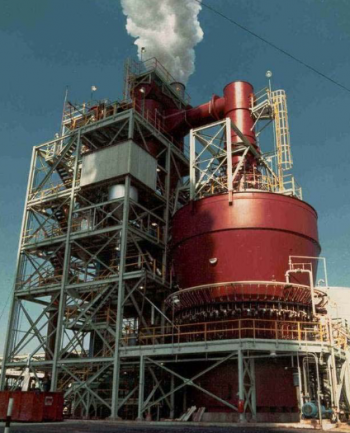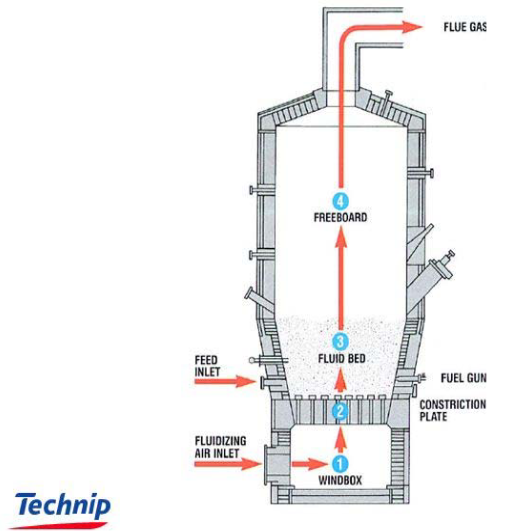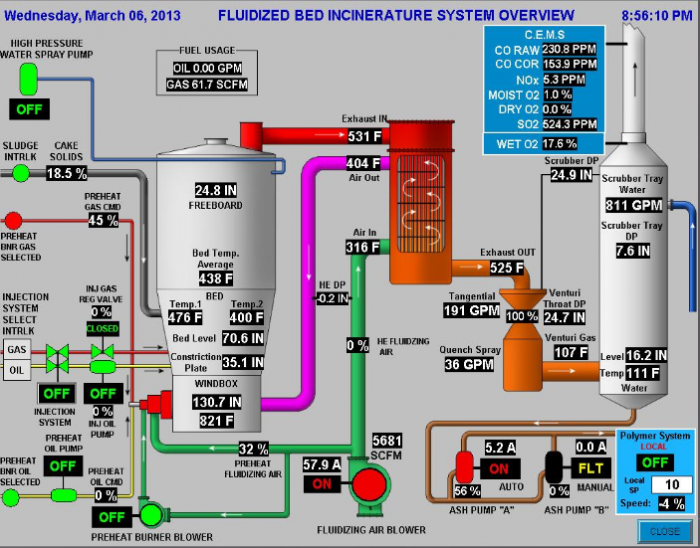Download information:
 What is an Fluidized Bed Incinerator? (6,873.52 KB) What is an Fluidized Bed Incinerator? (6,873.52 KB)
|
 What is a Fluidized Bed Incinerator?
What is a Fluidized Bed Incinerator?
A Fluidized Bed Incinerator uses a bed of hot sand or other granular material to transfer heat directly to waste. It is commonly used for destroying municipal sludge.
Construction of a Fluidized Bed Incinerator
- Sizing based on heat balance air and gas volumes
- Auxiliary fuel choice (typically oil, gas, or dual fuel)
- Overbed air option for highly volatile wastes
- Improves reactor temperature profile
- Improves efficiency in turndown conditions
- Usually results in smaller dome diameter
- Generally not required for hot windbox municipal sludge incinerators (overbed air is not preheated)
Fluidized Bed Incinerator Heat Recovery
- Typical for municipal applications
- Minimal auxiliary fuel requirements
- Refractory dome distributor
- Developed by Dorr-Oliver in the 1950s
- Low risk design up to 22’ diameter dome
- Air preheater is a proven low-risk design
- Typical preheated air temperatures to 1200°F (air preheat to over 1400°F is possible when required)
Material Movement in a Fluidized Bed Incinerator:

Fluidized Bed Incinerator Instrumentation and Controls
- Fluidized Bed Incinerators can be built, or rebuilt with state-of-the-art control systems. Advanced Process Controls can be used to optimize the system for maximum product yield, product quality, and fuel savings.
- Control packages can be customized to give the customer a fully automated machine, to a basic package that requires manual intervention at every step.
- All systems can be automated.

